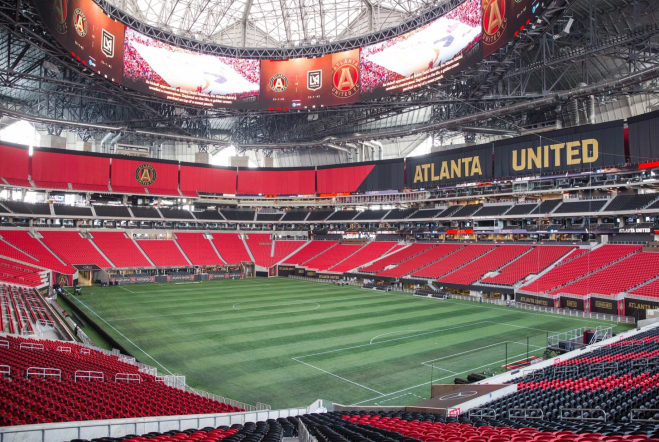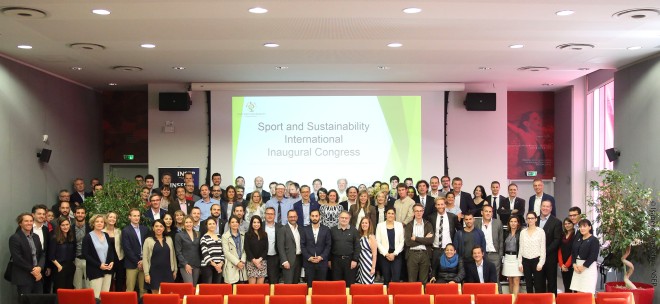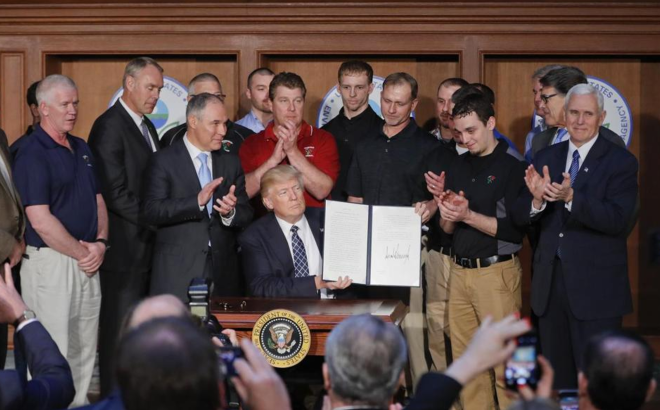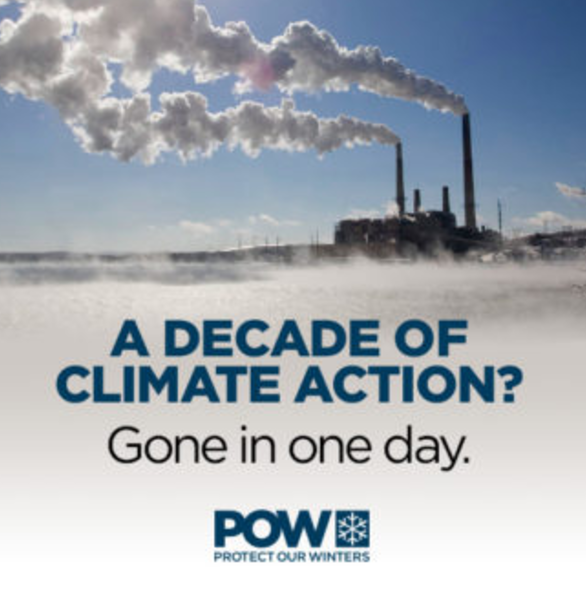About a month ago, GreenSportsBlog launched a new hashtag, #CoverGreenSports. Its goal is to encourage the mainstream media, from sports to green to news, to cover the sports greening movement. Last week, the US “paper of record,” The New York Times and lead NFL writer Ken Belson, stepped up to the #CoverGreenSports plate in a big way, with “Sports Stadiums Help Lead the Way Toward Greener Architecture”.
The fourth week in May should be a quiet time for the lead NFL reporter at The New York Times. The draft, which took place in April, is already old news and training camps don’t open until late July. You would think this time of year is when NFL writers should be on vacation.
But last week was a busy one for Ken Belson, proving that there is no such thing as a quiet period for the NFL.

Ken Belson of The New York Times (Photo credit: The New York Times)
In fact Belson, working at breakneck pace, had three stories in The Times over a 48 hour period:
- “The NFL and Nike Make Room for Fanatics,” detailed how the League expects revenue from merchandise sales to increase by 50 percent by 2030 through a new deal with Fanatics.
- In “NFL Anthem Policy Bound to Please Only the NFL,” Belson opined about the NFL’s controversial, just-announced national anthem policy. It was instituted in response to protests by some NFL players in 2016 and 2017, most notably ex-49ers QB Colin Kaepernick, who knelt during the playing of the national anthem. They did so to draw attention to police brutality and other social injustice against African-Americans. But many NFL fans, including President Trump, feel that the kneeling players disrespect the flag. The new policy requires players to stand for the playing of the anthem or stay in the locker room during that time. There was no player input on this decision. Belson’s take: “It’s hard to envision the N.F.L. crafting a policy that satisfies everyone. But one that is likely to satisfy only the 32 owners hardly seems like an enlightened solution.”
But it was his third story that interested me most — and made me smile.
In “Sports Stadiums Help Lead the Way Toward Greener Architecture,” Belson gave Times readers a terrific Green-Sports tutorial.
He kicked off with Atlanta’s Mercedes-Benz Stadium, the new home of the city’s NFL and MLS teams and the world’s first LEED Platinum certified stadium. Belson’s main insight is in sync with GreenSportsBlog’s overall ethos: “Green stadiums are shining a light on the complex and critical issue of climate change. Fans disinclined to care about the issue are exposed to things like highly efficient LED lighting or low-flush toilets, and can see that going green is not a hardship, but a choice.”

Mercedes-Benz Stadium in Atlanta, the first to win LEED Platinum certification. (Photo credit: Kevin D. Liles for The New York Times)
Belson then took readers on a brief trip across the pond — “many of the innovations [in green stadiums-arenas] are being developed in Europe, where laws and regulations governing greenhouse gas emissions are stricter,” — before pivoting back to North America and the National Hockey League.
He lauded the NHL as a green leader among sports leagues for understanding the existential threat the sport faces from climate change and for taking steps to combat it: “The number of ponds that freeze over in winter has fallen dramatically in recent years, making the sport less accessible in countries like Canada, where many children first start playing the game outdoors. Going green is a way to address a long-term threat, not just save money.”

According to a study by McLeman and Robertson, published in The Canadian Geographer, the future of outdoor ice hockey on Lake Louise in Alberta and elsewhere in Canada is at risk due to the effects of climate change (Photo credit: Edmonton Journal)
GreenSportsBlog readers are likely familiar with much of this. And the folks quoted in Belson’s piece likely ring a bell.
You probably recognize Scott Jenkins, Mercedes-Benz Stadium’s general manager and the Chairman of the Board of the Green Sports Alliance, as an “evangelist of all things green.”

Scott Jenkins (c), General Manager of Mercedes-Benz Stadium, flanked by Rich McKay (l), President of the Atlanta Falcons and Arthur Blank, at the LEED Platinum announcement event (Photo credit: AMB Sports and Entertainment)
And you probably know of Allen Herskhowitz, ex-President of the Alliance and a founder of Sport and Sustainability International (SandSI), which promotes low-carbon strategies for sports teams, leagues and association. He told Belson, “Any single sporting event doesn’t really have a giant ecological footprint, whether it’s a football game or even a season for a team. But the cultural and social platform of sports is almost unparalleled in terms of its ability to reach people.”
Yes, you may recognize Scott and Allen and the many other Green-Sports luminaries who have been featured in our posts these past five years, but the thing is, most humans have no idea who they are and are unaware of the important work they are doing.
So it is very important that The (NOT failing) New York Times, with its massive reach and prestige, has decided to #CoverGreenSports with Belson’s piece.
Does this foreshadow a trend?
It should, especially since the millennial and GenZ readers that The Times — and for that matter, almost all media outlets — is desperate to engage, care more deeply about the environment, sustainability and climate change than do their predecessor generational cohorts.
But it is, methinks, too early to tell.
One potential brake on an increase in Green-Sports coverage from mainstream media outlets is that the topic crosses many areas — sports, green/environment, business, and politics, to name a few. That means that no one department claims natural ownership of Green-Sports and so no editor will assign a beat writer to cover it. What is more likely is that the hodgepodge we see now — a rare story by a sports reporter here and another one-off story from a business reporter there — will continue.
Until, that is, a department editor — I don’t care which department — says strongly “Green-Sports is MINE!”
With that in mind, we invite any visionary Green-Sports-minded editors to go through GreenSportsBlog’s archives to find a few hundred compelling story ideas to bring to their readers.
You will be glad you did!




